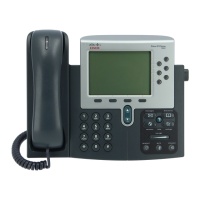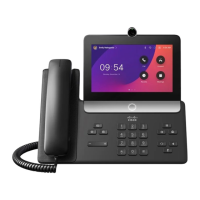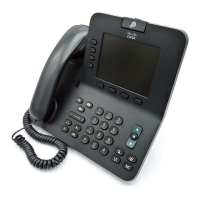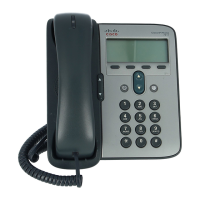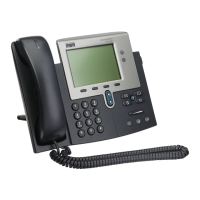3-3
Cisco SIP IP Phone Administrator Guide
Chapter 3 Managing Cisco SIP IP Phones
Modifying the Phone’s Network Settings
• Unlock configuration mode as described in the “Unlocking Configuration Mode” section on
page 3-2. By default, the network parameters are locked to ensure that end users cannot modify
settings that might affect their network connectivity.
• Review the guidelines on using the Cisco SIP IP phone menus documented in the
“Using the Cisco SIP IP Phone Menu Interface” section on page 2-15.
• After making your changes, relock configuration mode as described in the “Locking Configuration
Mode” section on page 3-2.
Step 1 Press the settings key. The Settings menu is displayed.
Step 2 Highlight Network Configuration.
Step 3 Press the Select soft key.The Network Configuration menu is displayed.
Table 3-1 lists the network parameters available in the Network Configuration menu.
Table 3-1 Network Configuration Parameters
Parameter Can Edit? Description
Admin. VLAN Id Yes, but if you have an
administrative VLAN
assigned on the
Catalyst switch, that
setting overrides any
changes made on the
phone.
Unique identifier of the VLAN to which the phone is attached. The
value in this field is used only in switched networks that are not
Cisco networks.
Alternate TFTP Yes Whether to use an alternate TFTP server. This field enables an
administrator to specify the remote TFTP server rather than the
local one. Possible values for this parameter are Yes and No. The
default is No. When Yes is specified, the IP address in the TFTP
Address parameter must be changed to the address of the alternate
TFTP server.
Default Routers 1 through 5 Yes, but DHCP must
be disabled.
IP address of the default gateway used by the phone. Default
Routers 2 through 5 are the IP addresses of the gateways that the
phone attempts to use as an alternate gateway if the primary gateway
is unavailable.
DHCP Address Released Yes Whether the IP address of the phone can be released for reuse in the
network. When you set this field to Yes, the phone sends a DHCP
release message to the DHCP server and goes into a release state.
The release state provides enough time to remove the phone from
the network before the phone attempts to acquire another IP address
from the DHCP server. When moving the phone to a new network
segment, you should first release the DHCP address.
DHCP Enabled Yes Whether the phone will use DHCP to configure network settings
(IP address, subnet mask, domain name, default router list, DNS
server list, and TFTP address). Valid values for this field are Yes and
No. By default, DHCP is enabled on the phone. To manually
configure your IP settings, you must first disable DHCP.
DHCP Server No IP address of the DHCP server from which the phone received its
IP address and additional network settings.
